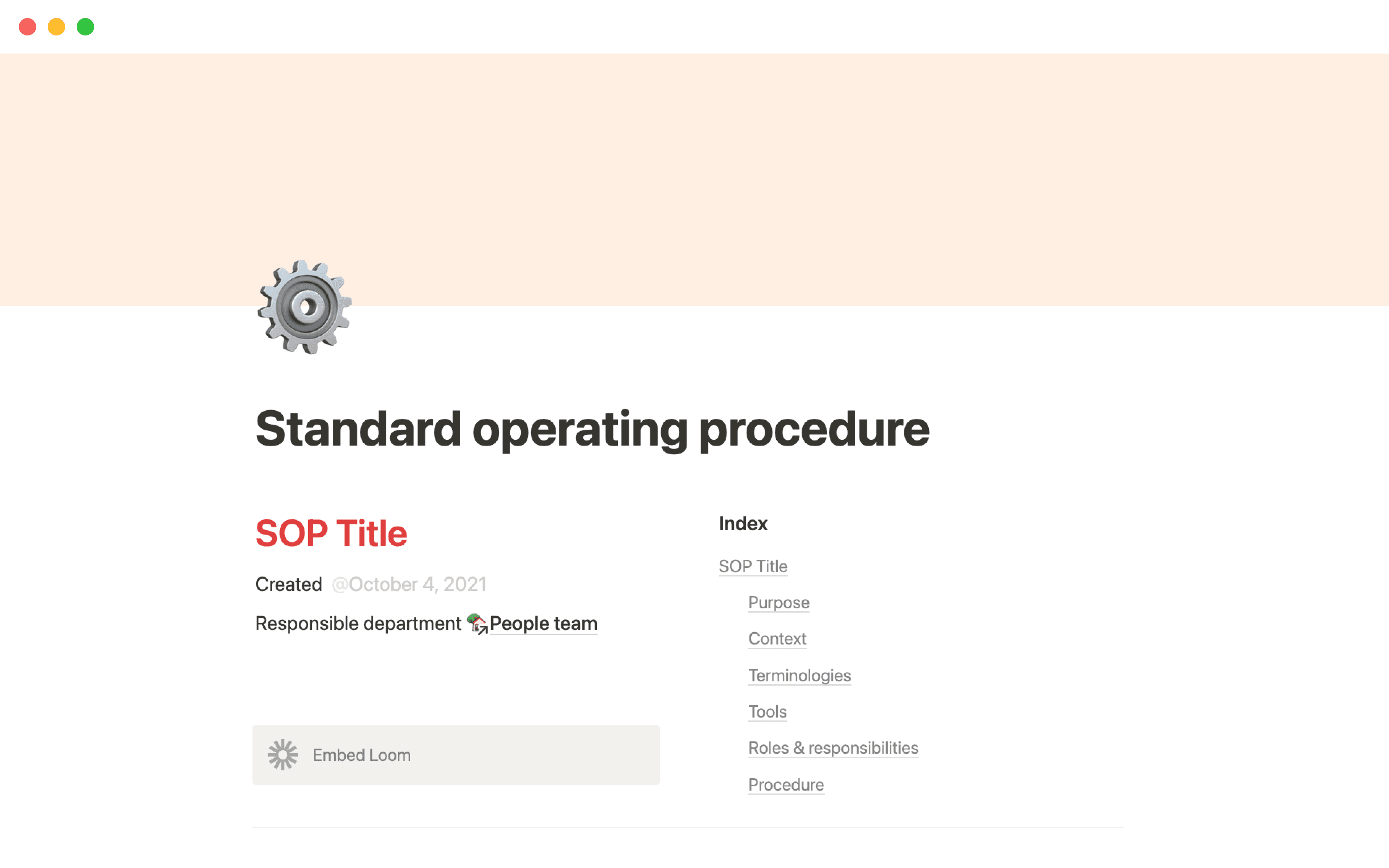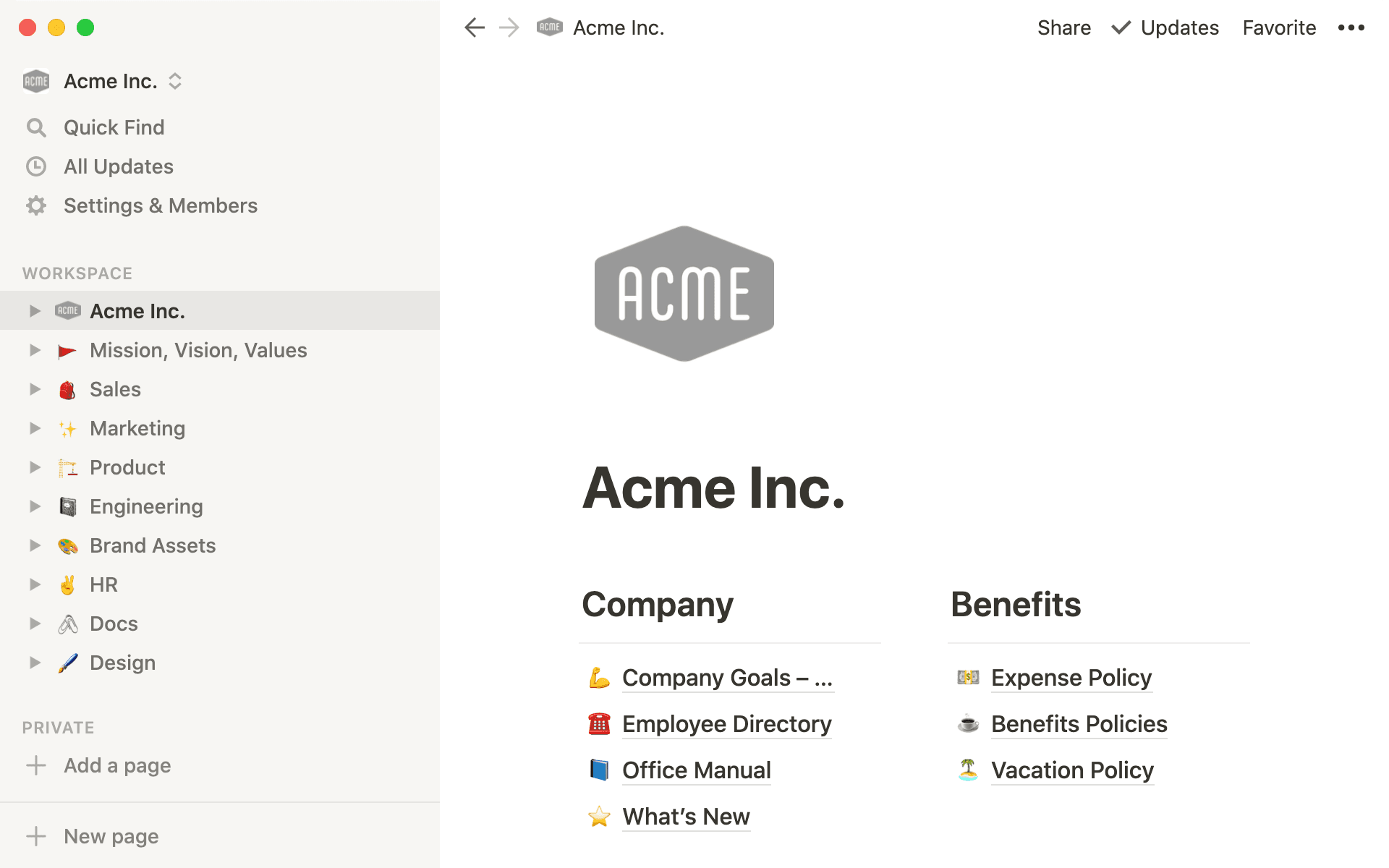Writing standard operating procedures (SOPs) could very well be the strategy your startup needs to finally break through that persistent growth ceiling to a higher gear.
But most startups avoid writing them entirely. It makes sense that SOPs are frequently overlooked at startups, notorious for onboarding new members and implementing new processes at a rapid clip. In terms of impactful ways to grow your startup, SOPs don’t exactly generate excitement like the brand video you’re posting on social channels. Sure, SOPs are essential for businesses to function smoothly, but that’s hard to commit to when you’ve got a growing company, are making processes up on the fly, and pivoting frequently.
But SOPs don’t have to be painful to maintain or systematize.
Having an SOP template in place will set your startup up for success. With an SOP template to start with, standard guidelines, and rigorous taxonomy, SOPs can become the resource they’re intended to be instead of a pain.

Here’s how (and where) you should be creating SOPs for your startup.
What is a standard operating procedure (SOP)?
A standard operating procedure (shortened to SOP) is a centralized resource that explicitly outlines step by step how employees of a company complete a given process or task, like the steps a designer takes when updating visuals on the company website. An SOP details the nitty-gritty of a process from start to finish — spanning far beyond a document providing a sort of simple overview.
The 5 essential elements of a top-notch SOP
Documentation is never top of mind for startups. This goes double for virtual teams. Without a centralized system for documentation to align the team on a (potentially) global level, questions will spring up and growth will slow to a crawl.
It’s a problem that has largely remained unsolved — but that isn’t for lack of trying. A quick Google search for “sop template” shows over 50 million results — that’s a lot of noise to sort through when you’re busy putting out the fires every startup encounters daily.
After studying the best of the best, we’ve found that top SOP templates have a few things in common:
Their format matches the task at hand. The best SOPs include both written instructions and video to illustrate what happens when you’re completing the task. Don’t let a written format limit you — screenshots and walk-throughs via video (for example, Notion has a Loom embed option) help streamline knowledge transfer/management between team members and help you scale faster.
They spare no details. As a rule, you should be able to hand the SOP document to an employee and count on the fact that it provides all the context for the reader without additional coaching.
They invite action from the team. This hinges on the selected tool or software your startup chooses to build its knowledge base. In Notion, work lives alongside knowledge so teams don’t have to jump between tools to make SOPs actionable. The tool should be collaborative and needs to be easy to edit or update if there are tweaks to the process over time.
They share a common format. A repeatable format and file/folder naming convention make new SOPs easy to create and digest. The formula of Notion’s SOP template is a solid one to follow: purpose, context, definitions/terminologies, related tools, roles/responsibilities, and procedure.
They unite all teams. SOPs should act as a single source of truth for all the procedures and essential startup documentation.
Putting SOPs off is scary when you consider the alternative. Having SOPs in place helps startups avoid burnout (from repeatedly training the same thing because no SOP was written or from lengthy onboarding again because no SOPs are in place) and enabling your team to scale with ease over time. This report from CB Insights lists burnout as one of the top 12 reasons startups fail. Implement SOPs as early as possible to create repeatable processes and continued learning from every employee’s first day.
Accelerate your team’s organization with Notion’s standard operating procedure template
Working from an SOP template to start organizing your team doesn’t have to be mind-numbing. Kicking off with a tried-and-true template, even if it is basic, can spur iterations and improvements to propel you forward.
(Plus, SOPs pave the way for building an operations manual, which, by the way, is a requirement when selling the business down the line.)
To kick-start your own onboarding SOP, start with Notion’s own SOP template and build out from there, adding appendices to set up new team members for success, like frequently asked questions, additional reading or resources, owners of certain initiatives, etc.
Here is the only SOP template you’ll need to get your team started strong:
Highlights of this SOP template include:
Embed screen recordings (Loom is a great resource), images, and workflow boards to serve as visual aids.
Add supplementary content by linking to other relevant Notion pages.
Build accountability by dynamically tagging team members and creating deadlines with alerts.
Wondering where you might be able to apply this SOP template? Here are some ideas of time-intensive and high-priority processes you could write SOPs for:
Product launch plan — Many startups begin with just a product and a vision. A product launch plan SOP is a great place to start internal (or even external) communication on the goals, phases, and outcomes of building new products.
SEO optimizing a blog post — What would startups be without content (or a content manager with a strong checklist)? An SEO SOP should share exactly how to write and optimize a blog post, even starting from the foundational step of figuring out who will write the piece.
New team member onboarding — One of the most beneficial places to start with SOPs in your startup is in the onboarding process. Many organizations lose momentum in onboarding new team members, a process especially pertinent for startups, as they lose one in four employees in a given year. Making the onboarding process as repeatable and as smooth as possible can help keep your startup ensure the needs of a growing staff and growing company align.
Align the team on central SOPs with a tool like Notion
The earlier you implement a system of SOPs within your startup, the sooner you chip away at problems that plague startups, like knowledge hoarding and ineffective employee onboarding experiences, to name a few. Documentation in the form of company wikis, hosted as a centralized “database” of sorts, is a powerful solution to overcome these common challenges and unify the team.

With clear standards guidelines, centralized information, and frequent updates, SOPs can be a resource rather than a headache. Flexing the use of an SOP template can align the team and kick knowledge transfer into high gear. Your current (and future) team will thank you.
We want to make sure you don’t have to invent (and reinvent) the wheel on such initiatives in Notion. We host loads of templates that can get you started on any number of tasks or processes. A template to start with allows you to duplicate and customize it for your company’s new projects, house it in a centralized spot, and create a workspace where team collaboration can take place.
Take a look at our SOP template to start brainstorming applications for your startup.

